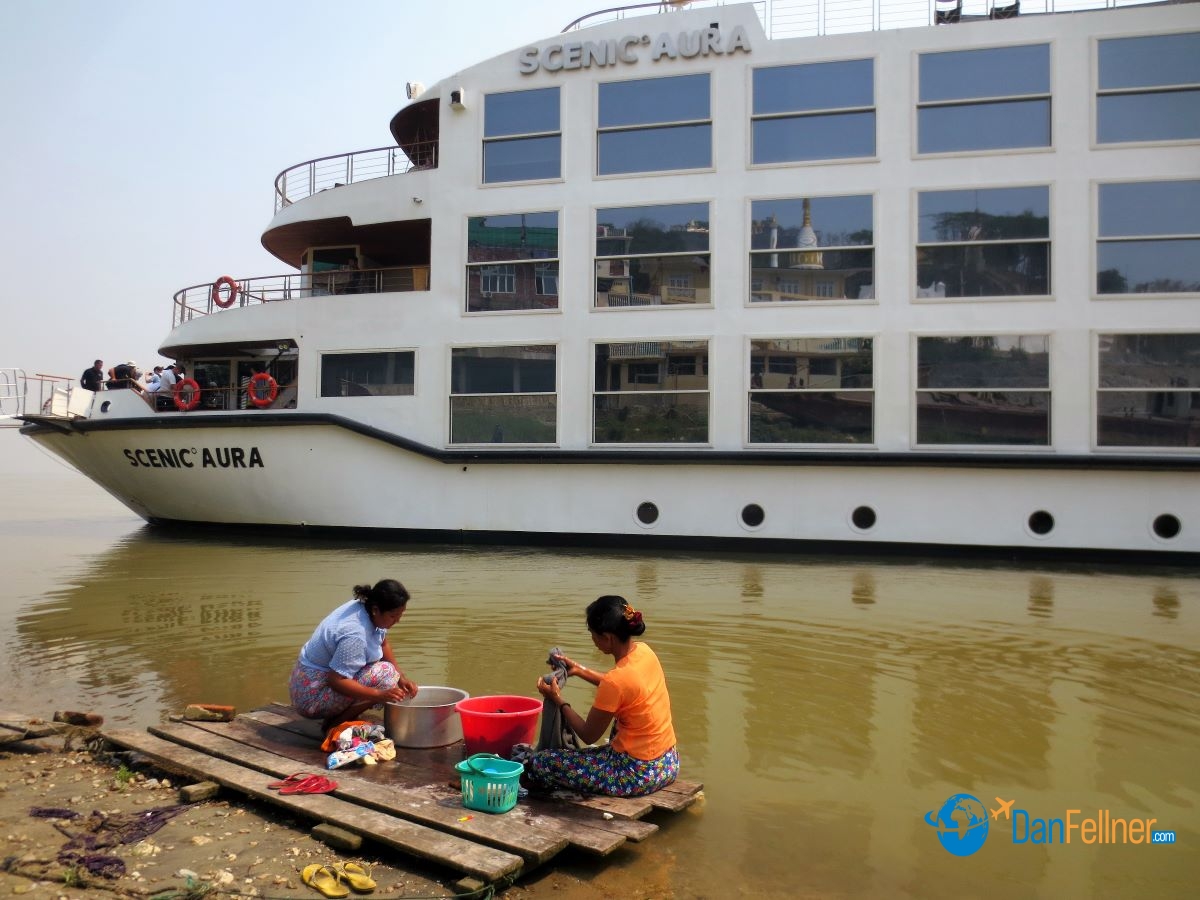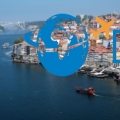Trip on Scenic Aura offers glimpse into Kipling’s 19th-century Burma
The Arizona Republic — April 7, 2019
MANDALAY, Myanmar – Rudyard Kipling brought worldwide attention to Myanmar – then part of colonial British India — in a famed 1890 poem called “Mandalay.” Kipling extolled the beauty of this mysterious, off-the-beaten path land and its people.

Burmese girls wearing the traditional thanaka makeup in front of a pagoda in a village on the Irrawaddy River.
The poem was further engrained in Western pop culture when it was adapted into a song – “The Road to Mandalay” — recorded by Frank Sinatra in 1958.
Much of this country of 53 million people in Southeast Asia has changed little since Kipling first laid eyes on the place he immortalized 130 years ago. Once you leave the major cities, rural Myanmar – also known as Burma – is like taking a step back into Kipling’s 19th-century poem.
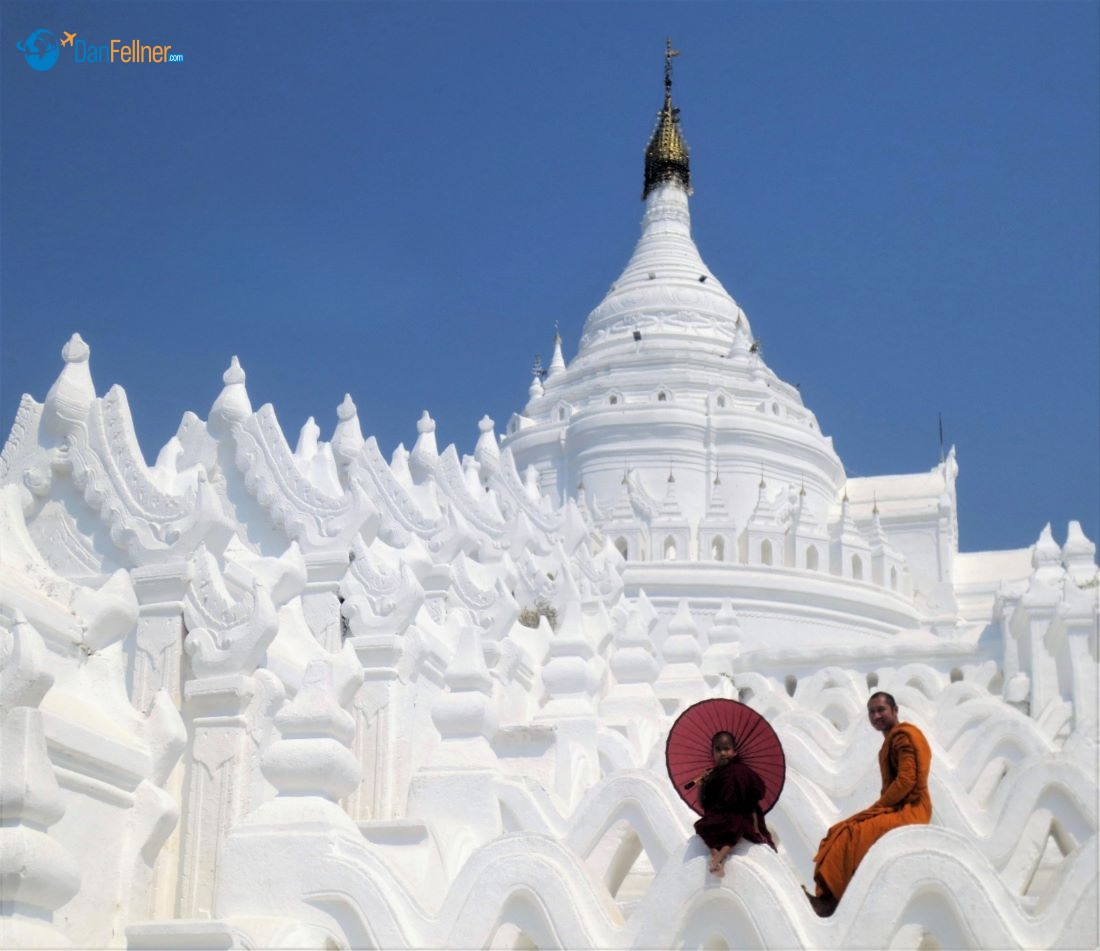
The stunning, all-white Hsinbyume Pagoda in Mingun, Myanmar, built in 1816.
Farmers still work the rice paddies by hand, many villages don’t have electricity, horses and oxen transport people on unpaved roads past banana trees, women wash their clothes in the river, and the Burmese people cover their faces with a distinctive makeup called thanaka – made from ground bark – a tradition that dates back more than 2,000 years.
I recently had a chance to explore rural Myanmar, with all the creature-comforts of home, on a 10-day cruise down the Irrawaddy River from Mandalay – the country’s second-largest city — to Pyay on the Scenic Aura, a luxurious 44-passenger boat that’s been sailing the Irrawaddy since 2016.

The flag of Myanmar flies on the Scenic Aura while the sun sets on the Irrawaddy River.
At that time, democratic reforms initiated by a military government opened the door to a flood of tourists to a country that had essentially been closed to the rest of the world for six decades.
Visitors started pouring into Myanmar for a chance to see a region of Southeast Asia that offered thousands of spectacular and unspoiled Buddhist pagodas and temples, and an authentic look into monastic life, which so permeates this deeply spiritual country.

Riding in a horse cart through the Myanmar countryside.
And when the tourists came, so did the cruise lines. In 2016, there were some 10 international lines offering sailings on the Irrawaddy, which flows north to south through the heart of Myanmar from its source high in the Himalayas down to the Indian Ocean. The cruises were running at close to full capacity.
But Myanmar’s tourist boom didn’t last long. Civil unrest involving a Muslim-minority group, the Rohingya, erupted in an isolated region of the country called Rakhine. More than 500,000 Rohingya have fled to neighboring Bangladesh. Words like “ethnic cleansing” and even “genocide” have been used to describe alleged atrocities committed by Myanmar’s military.

The Sutaungpyai Pagoda in Mandalay, Myanmar, where the cruise began on the Scenic Aura.
In short, Myanmar has become a political pariah and many tourists are spooked.
Most of the leading cruise lines, including Viking and Avalon, have recently pulled out of the country. Now, Scenic is one of just three major cruise lines that still remains on the Irrawaddy and capacity on its 19 sailings this year is hovering at only around 60 percent. (Due to water levels on the river and the climate, the sailing season in Myanmar only lasts from August-April).

Novice monks enjoy a swing set at a rural village in Myanmar.
Still, the Australian-based cruise line with a growing presence in the U.S. market remains committed to Myanmar.
“It’s a very tricky situation to address,” says Phil Jordan, general manager of Scenic Asia. “You can’t turn a blind eye to anything that’s happening in any country. But by not traveling here, we’re not helping anyone. We have a commitment to our staff here and we want to continue.”
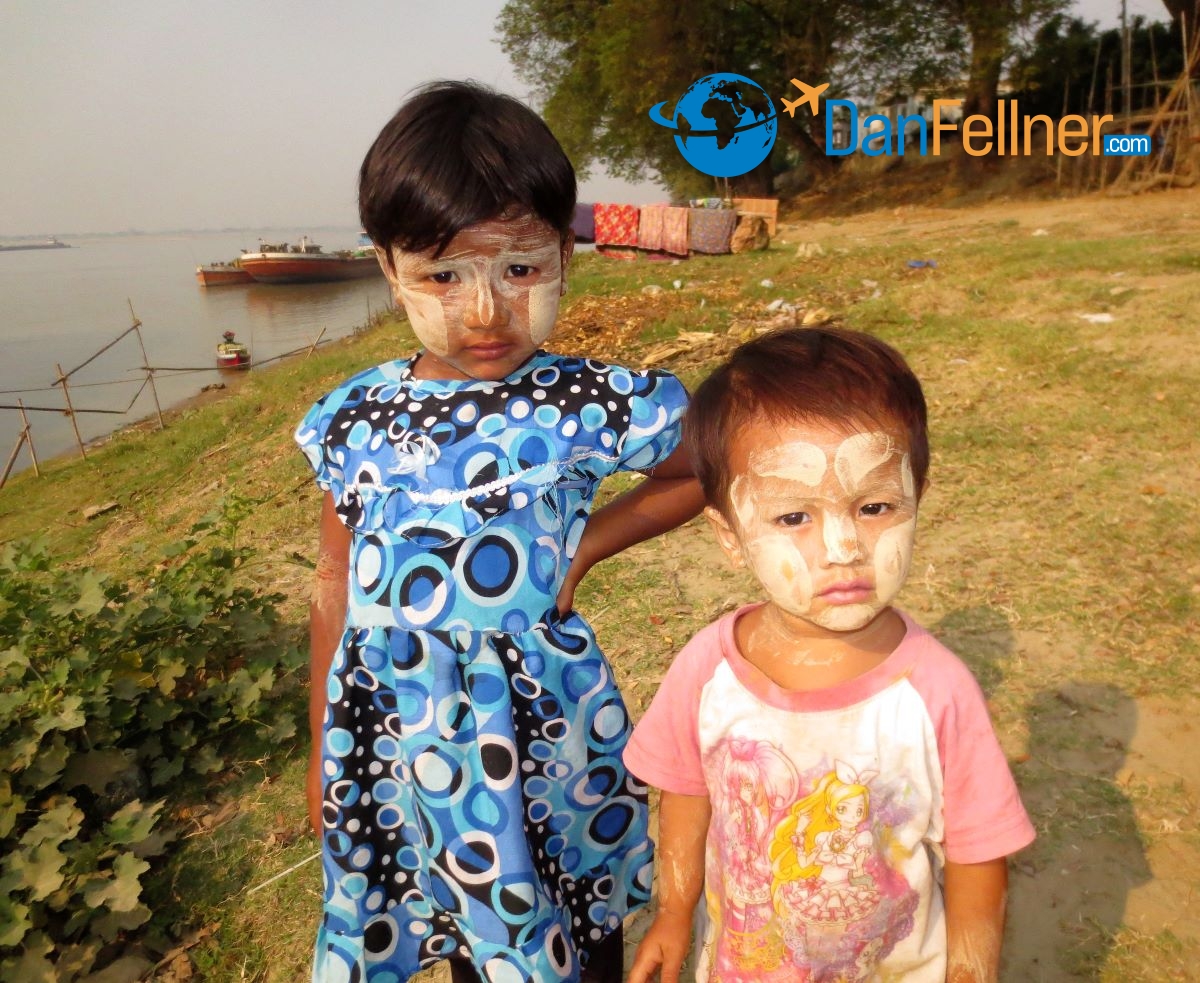
Burmese children living in a village on the Irrawaddy River cover their faces with a distinctive makeup called thanaka, made from ground tree bark.
Tourists are not allowed anywhere near the conflict zone – located in the far western part of the country — and I found Myanmar to be extremely safe. The U.S. State Department recently issued a level 2 travel advisory for Myanmar – “exercise increased caution.” But there are numerous other countries that fall into the same category, including Denmark, France and the United Kingdom.
Regarding the ethical issues about visiting a country whose government has been accused of committing atrocities against civilians, that’s a decision every traveler must make on their own. As for the Burmese people, I found them to be some of the most welcoming you’ll encounter in Asia – always quick to greet visitors with a wave and a smile. Street crime is virtually non-existent.
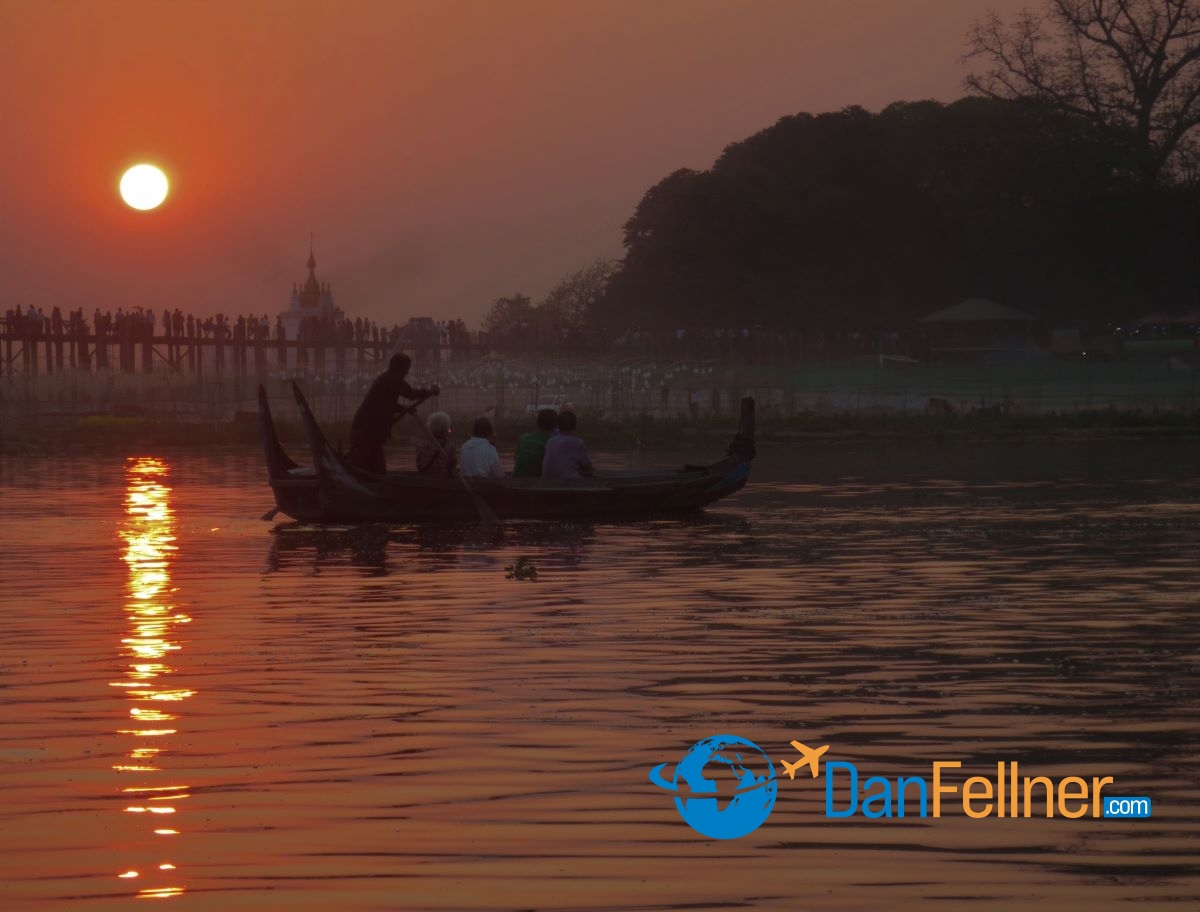
Sunset on Lake Taungthaman near Amarapura, Myanmar.
All told, we sailed 334 miles south on the Irrawaddy between Mandalay and Pyay, with a brief 6-mile trek north of Mandalay to Mingun, where we visited the stunning all-white, early 19th-century Hsinbyume Pagoda.
In Sagaing, we spent the morning at a monastic-supported school and donated funds provided by Scenic to the principal. Afterward, we walked to a nunnery where we had the honor to donate lunch to 72 nuns, placing tea, cookies and fruit in their bags while they marched in a procession and chanted prayers. Some of the Aura’s passengers arose at 4:30 a.m. to give alms to the local monks.
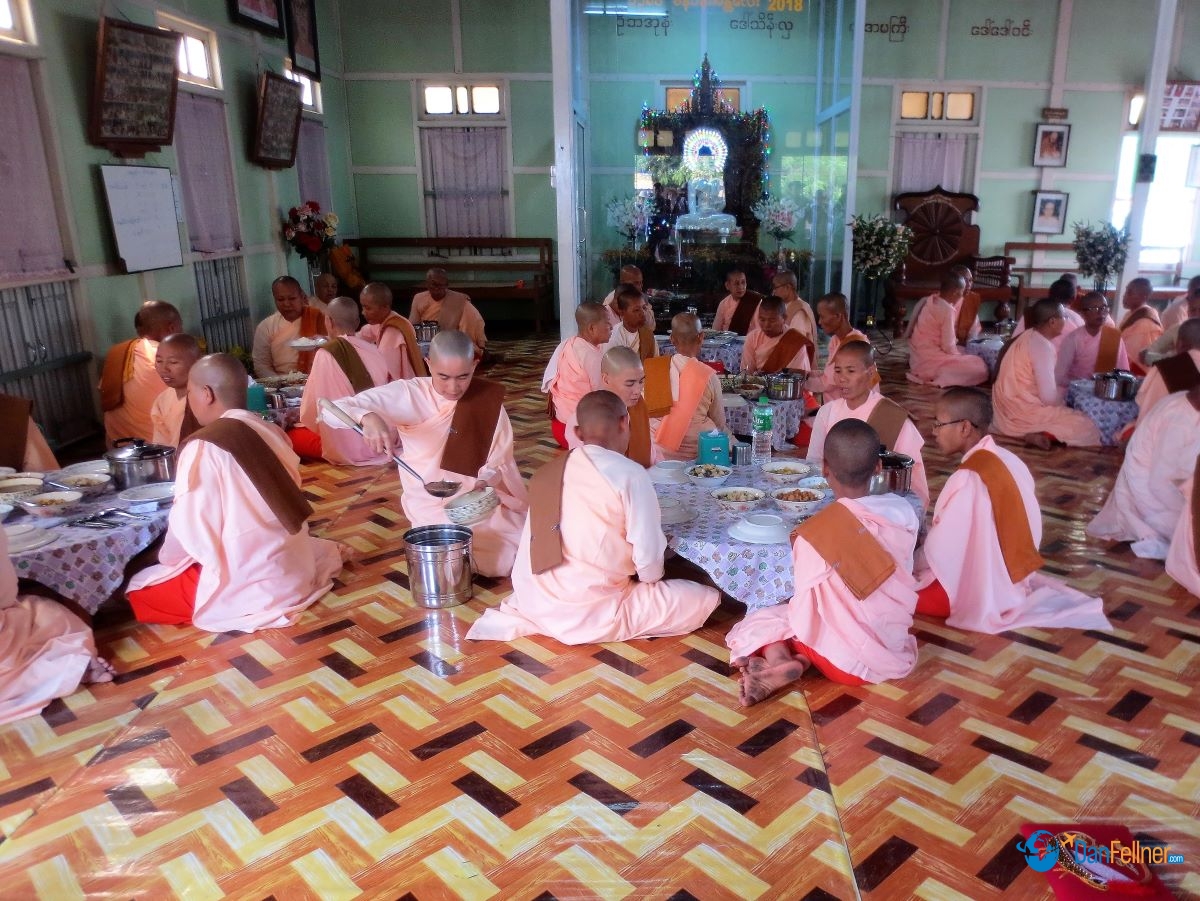
Nuns having lunch at a Buddhist nunnery in Sagaing, Myanmar.
With so many impoverished villages on the route, Scenic is making a concerted effort to improve conditions in the places it visits. Aside from donating money and supplies to numerous schools and monasteries, the cruise line built a sanitation block in a village we visited called Yandabo, famous for its handmade pottery.
“When we visit these areas, we would like to give back to the community,” says Yi Mon, one of two Burmese guides on the Aura. “What do they need? So we donate.”
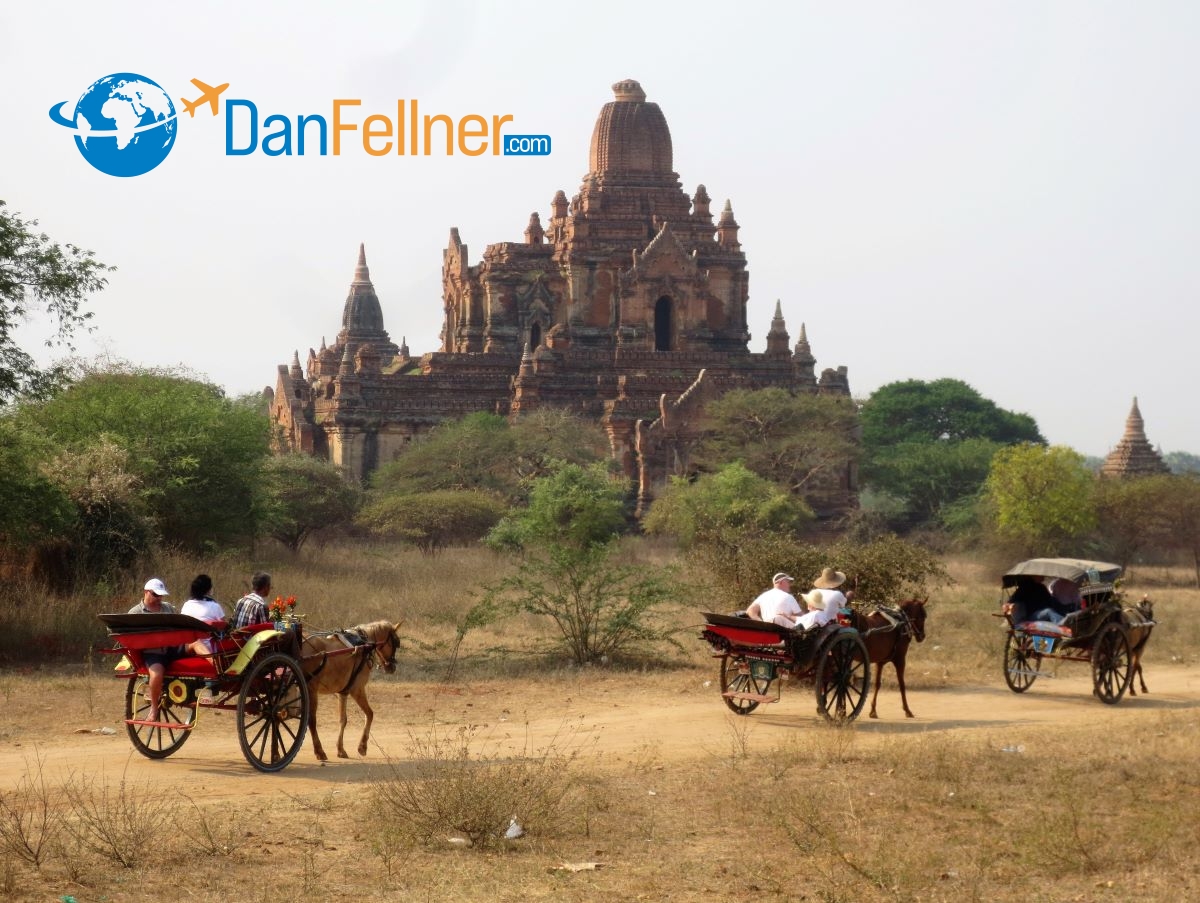
Horse carts take visitors past some of the ancient temples in Bagan, Myanmar.
Perhaps the highlight of the trip was a two-day stop in Bagan, one of the most remarkable archaeological sites in the world that few people have heard of. Bagan features more than 2,200 Buddhist shrines in a 26-square-mile area, some dating back 1,000 years.
While Angkor Wat in nearby Cambodia gets far more visitors, Bagan is just as spectacular. It offers the largest and densest concentration of Buddhist temples, pagodas and ruins in the world. The sprawling site is best seen by hot-air balloon or while riding in a horse cart.

Bagan features more than 2,200 Buddhist shrines in a 26-square-mile area.
Cruising the Irrawaddy is an ideal way to experience the hidden treasures of Myanmar, as the tourism infrastructure is substandard in most parts of the country. Electricity outages are common and hygiene at many restaurants is not up to Western standards.
“I think it’s still got that Asia of yesteryear feel,” says Jordan. “And that’s something that’s going to be harder and harder to find as time goes forward. You go down the river and easily feel like you’ve stepped back in time. It truly is a shame that so many other operators are leaving Myanmar, but I also believe it will recover, and quite swiftly.”
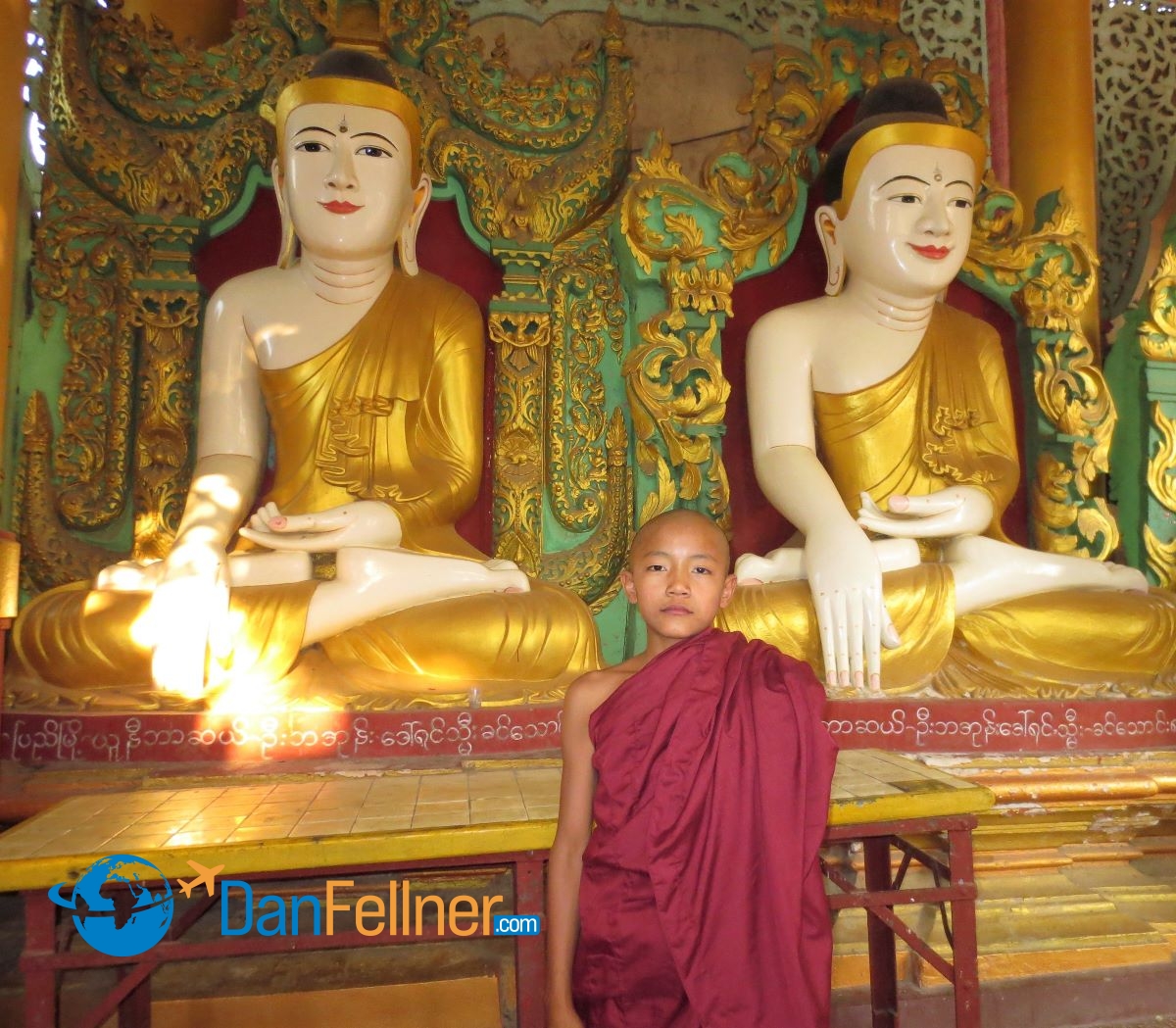
Important links:
Scenic Cruises
U.S. State Department page on Myanmar
© 2019 Dan Fellner

